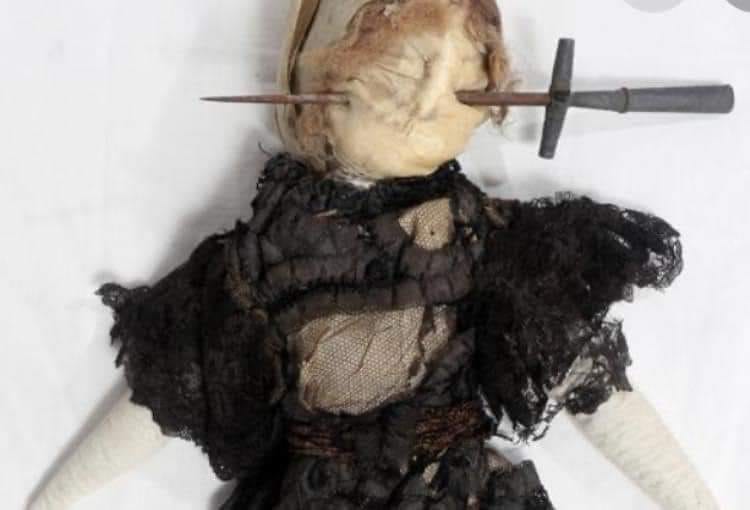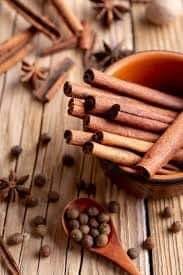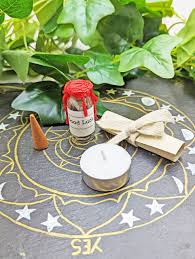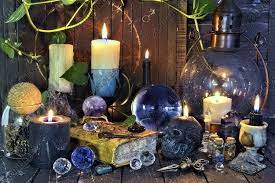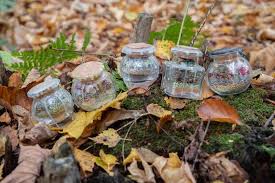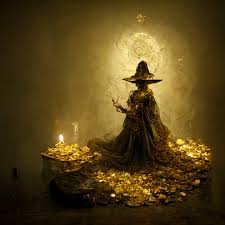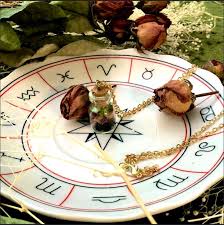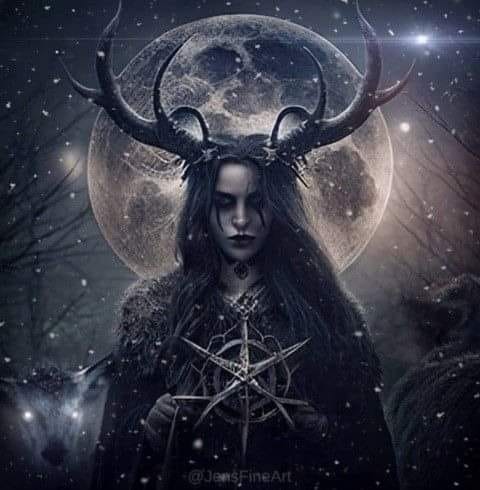In ancient times, there was a god or goddess for everything: war, love, fertility, protection, abundance, hunting, writing and healing. And yes, there were even gods and goddesses that presided over magic.
Here we discuss different witch goddesses from different countries.
1. Baba Yaga: The Slavic Witch Goddess
Perhaps one of the most well-known pieces of Slavic folklore is the story of the witch goddess Baba Yaga. Baba Yaga was once a well-respected and revered witch goddess in Eastern Europe and Western Asia. As Christianity spread, Baba Yaga was diminished from a goddess to an ugly old hag that lived out in the woods and ate little children. It is possible that Baba Yaga was originally a triple-goddess. Invoke Baba Yaga to tap into your wild side and connect with ancestors.
Baba Yaga: Slavic Witch GoddessBaba Yaga in her mortar and pestle vehicle.
2. Cailleach: The Winter Witch Goddess
Cailleach is a witch goddess from Scotland, Ireland and the Isle of Man. She is the Old Woman, the Winter Crone, the Veiled One, the Old Hag, and the Old Crone. Cailleach is the epitome of the “old hag” archetype and has long been honored for her rule over winter weather. When it snows, people say the Cailleach has unleashed her magic on the land. The mountains are the winter witch’s domain, as legend says The Winter Crone made the mountains her stepping stones. Cailleach is seen as an ancestor to many people in Ireland and Scotland as well as a sister to some of the most ancient goddesses of Irish and Scottish lore. She is the embodiment of Winter and all that it brings: snow, ice, cold, death and then eventually rebirth.
3. Hecate: Goddess of the Crossroads
Hecate is a well-known witch goddess of Ancient Greece still worshiped by modern-day pagans. She is the lady of the crossroads with three heads or, alternatively, guarded by a three-headed white dog. Her dominion is the moon, menstruation, intuition, dreams, the cycles of life-death-rebirth and witchcraft. In Kala Trobe’s Invoke the Goddess, she writes Hecate is the “patroness of prostitutes, thieves, and beggars not to mention witches…and protects those on the outskirts of society. She represents the objective eye searing through the façade of mainstream society. She is the original socialist.” Invoke Hecate during periods of great transition in your life: pregnancy, new parenthood, new career, death in the family, etc.
Hecate: Goddess at the CrossroadsHecate, Witch Goddess at the Crossroads
4. Isis: Egyptian Goddess of Magic
While not referred to as a “witch goddess”, Isis was indeed an Egyptian goddess of magic, in particular ritual magic. She is as ancient as time itself, and henceforth is the embodiment of the Feminine Divine. In Egyptian mythology, Isis gains her magical knowledge by tricking Ra into telling her his many names. She gave birth to the god Horus by taking in the seed of her dead husband, Osiris. That’s how powerful Isis’ magic is. She knows how to shapeshift and is depicted with the wings of a large bird. Invoke Isis when learning Egyptian magic, to birth something anew from destruction, and to learn the secrets of motherhood and life.
5. Morgan Le Fay: Fairy Witch Goddess
Shrouded in legendary mystery, Morgan Le Fay has been a prominent character in the Arthurian legends. She was the sister and aid to King Arthur himself. In some of the legends, Morgan Le Fay saves King Arthur by whisking him off to Avalon after a fatal battle. In her witch goddess form, Morgan Le Fay is an elemental master and herbalist. Part fairy, she was a priestess of Avalon and consort to the Lady of the Lake. Moreover, she possessed the ability to cross into other worlds and realms. Invoke Morgan Le Fay, fairy witch goddess, when working with fairies and elementals, parting the veil, and casting magic with herbs.
Circe: Witch Goddess of Aeaea; transformation, sorcery, potions and herbs.Circe, Witch Goddess of Aeaea
6. Circe: Witch Goddess of Aeaea
A name that’s come to be popular in modern times, Circe is a nymph and goddess of Ancient Greece. Her father, Helios, sends her to exile on an island called Aeaea. Circe is a goddess of transformation and is best known for her skill with potions, herbs, and animals. She is a kind goddess if you treat her right, but if wronged, she will transform you into a pig or other animal. Read about her in Homer’s Odyssey or in the new fictional novel Circe by Madeline Miller. Invoke Circe for justice against abusers, to learn the art of transformation, and to work with herbs and potions.
More Witch Goddesses
I did not go into full detail on every witch goddess in mythology. Suffice it to say there are many witch goddesses to learn from and invoke. Here are others I did not discuss: Diana, Aradia, Artemis, Minona, Nephthys, The Badbh, Irodessa, Freya, Maria Padilha, Cerridwen, Jezibaba, Lilith, Befana, Kybele, Herodias, Leto, and Medea. Some are hated and some loved. It is a theme that dates back centuries—do we love and revere the powerful woman or do we hate and exile her?
6 Witch Goddesses to Invoke For Magic, Empowerment, and More
In ancient times, there was a god or goddess for everything: war, love, fertility, protection, abundance, hunting, writing and healing. And yes, there were even gods and goddesses that presided over magic.
Here we discuss different witch goddesses from different countries.
1. Baba Yaga: The Slavic Witch Goddess
Perhaps one of the most well-known pieces of Slavic folklore is the story of the witch goddess Baba Yaga. Baba Yaga was once a well-respected and revered witch goddess in Eastern Europe and Western Asia. As Christianity spread, Baba Yaga was diminished from a goddess to an ugly old hag that lived out in the woods and ate little children. It is possible that Baba Yaga was originally a triple-goddess. Invoke Baba Yaga to tap into your wild side and connect with ancestors.
Baba Yaga: Slavic Witch GoddessBaba Yaga in her mortar and pestle vehicle.
2. Cailleach: The Winter Witch Goddess
Cailleach is a witch goddess from Scotland, Ireland and the Isle of Man. She is the Old Woman, the Winter Crone, the Veiled One, the Old Hag, and the Old Crone. Cailleach is the epitome of the “old hag” archetype and has long been honored for her rule over winter weather. When it snows, people say the Cailleach has unleashed her magic on the land. The mountains are the winter witch’s domain, as legend says The Winter Crone made the mountains her stepping stones. Cailleach is seen as an ancestor to many people in Ireland and Scotland as well as a sister to some of the most ancient goddesses of Irish and Scottish lore. She is the embodiment of Winter and all that it brings: snow, ice, cold, death and then eventually rebirth.
3. Hecate: Goddess of the Crossroads
Hecate is a well-known witch goddess of Ancient Greece still worshiped by modern-day pagans. She is the lady of the crossroads with three heads or, alternatively, guarded by a three-headed white dog. Her dominion is the moon, menstruation, intuition, dreams, the cycles of life-death-rebirth and witchcraft. In Kala Trobe’s Invoke the Goddess, she writes Hecate is the “patroness of prostitutes, thieves, and beggars not to mention witches…and protects those on the outskirts of society. She represents the objective eye searing through the façade of mainstream society. She is the original socialist.” Invoke Hecate during periods of great transition in your life: pregnancy, new parenthood, new career, death in the family, etc.
Hecate: Goddess at the CrossroadsHecate, Witch Goddess at the Crossroads
4. Isis: Egyptian Goddess of Magic
While not referred to as a “witch goddess”, Isis was indeed an Egyptian goddess of magic, in particular ritual magic. She is as ancient as time itself, and henceforth is the embodiment of the Feminine Divine. In Egyptian mythology, Isis gains her magical knowledge by tricking Ra into telling her his many names. She gave birth to the god Horus by taking in the seed of her dead husband, Osiris. That’s how powerful Isis’ magic is. She knows how to shapeshift and is depicted with the wings of a large bird. Invoke Isis when learning Egyptian magic, to birth something anew from destruction, and to learn the secrets of motherhood and life.
5. Morgan Le Fay: Fairy Witch Goddess
Shrouded in legendary mystery, Morgan Le Fay has been a prominent character in the Arthurian legends. She was the sister and aid to King Arthur himself. In some of the legends, Morgan Le Fay saves King Arthur by whisking him off to Avalon after a fatal battle. In her witch goddess form, Morgan Le Fay is an elemental master and herbalist. Part fairy, she was a priestess of Avalon and consort to the Lady of the Lake. Moreover, she possessed the ability to cross into other worlds and realms. Invoke Morgan Le Fay, fairy witch goddess, when working with fairies and elementals, parting the veil, and casting magic with herbs.
Circe: Witch Goddess of Aeaea; transformation, sorcery, potions and herbs.Circe, Witch Goddess of Aeaea
6. Circe: Witch Goddess of Aeaea
A name that’s come to be popular in modern times, Circe is a nymph and goddess of Ancient Greece. Her father, Helios, sends her to exile on an island called Aeaea. Circe is a goddess of transformation and is best known for her skill with potions, herbs, and animals. She is a kind goddess if you treat her right, but if wronged, she will transform you into a pig or other animal. Read about her in Homer’s Odyssey or in the new fictional novel Circe by Madeline Miller. Invoke Circe for justice against abusers, to learn the art of transformation, and to work with herbs and potions.
More Witch Goddesses
I did not go into full detail on every witch goddess in mythology. Suffice it to say there are many witch goddesses to learn from and invoke. Here are others I did not discuss: Diana, Aradia, Artemis, Minona, Nephthys, The Badbh, Irodessa, Freya, Maria Padilha, Cerridwen, Jezibaba, Lilith, Befana, Kybele, Herodias, Leto, and Medea. Some are hated and some loved.
It is a theme that dates back centuries—do we love and revere the powerful woman or do we hate and exile her?








